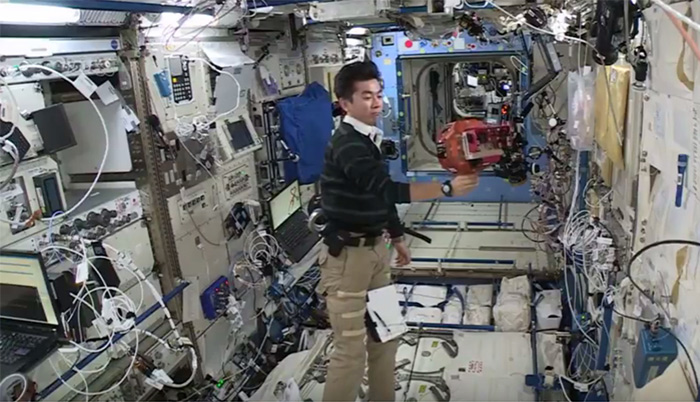![]() Home > Space & Science
Home > Space & Science
Space Drone Learns How to See With One Eye in Zero-G

PHOTO: NASA
![]() October 2nd, 2016 | 10:15 AM |
October 2nd, 2016 | 10:15 AM | ![]() 1026 views
1026 views
WORLD
One of the small drones aboard the ISS taught itself how to go around station with just one eye, and it was a lot harder than you might think. For starters, the SPHERE drone (that's short for Synchronized Position Hold Engage and Reorient Experimental Satellite) learned on its own by using machine learning. That method isn't typically used for space applications, because if it fails, it could result in a costly catastrophe. This is the first time a drone in space employed the technique to teach itself. Robots also still can't judge distances between objects using just one camera. Plus, the drone was operating in microgravity, floating around in a place where there's no up or down.
Here's how the SPHERE drone did it despite all those difficulties: first, it zoomed around the station's Japanese module using its 12 gas thrusters, recording everything in sight with two cameras. Once it was done learning distances between objects after that two-eyed run, it was able to navigate on its own without bumping into things with only a single camera open. Before all these, though, the team tested their learning software on a quadcopter in sets they built at the Delft University of Technology.
Dario Izzo, the project coordinator from the European Space Agency, said his team have been working towards this goal for five years:
"It was very exciting to see a drone in space learning using cutting-edge artificial intelligence methods for the very first time.
At ESA, in particular in our team, we've been working towards the goal for the last five years. In space applications, machine learning is not considered a reliable approach to autonomy: a 'bad' learning approach may result in a catastrophic failure of the entire mission."
Source:
courtesy of ENGADGET
by Mariella Moon
If you have any stories or news that you would like to share with the global online community, please feel free to share it with us by contacting us directly at [email protected]